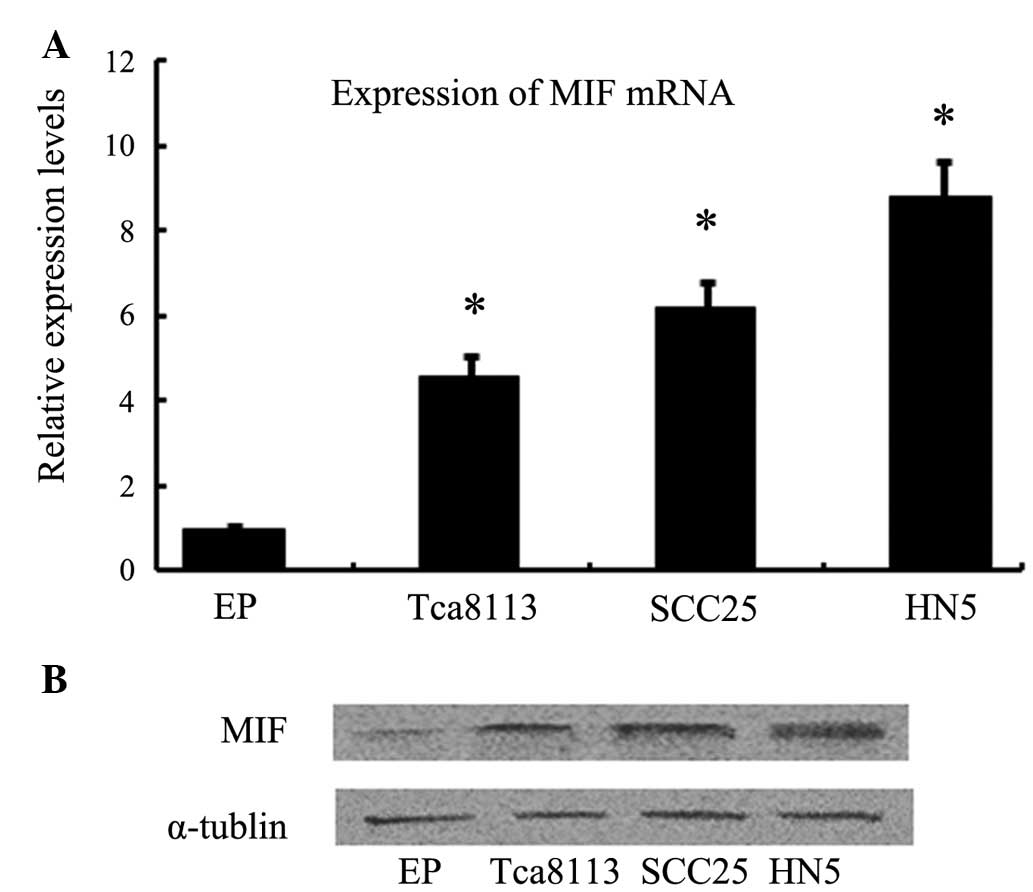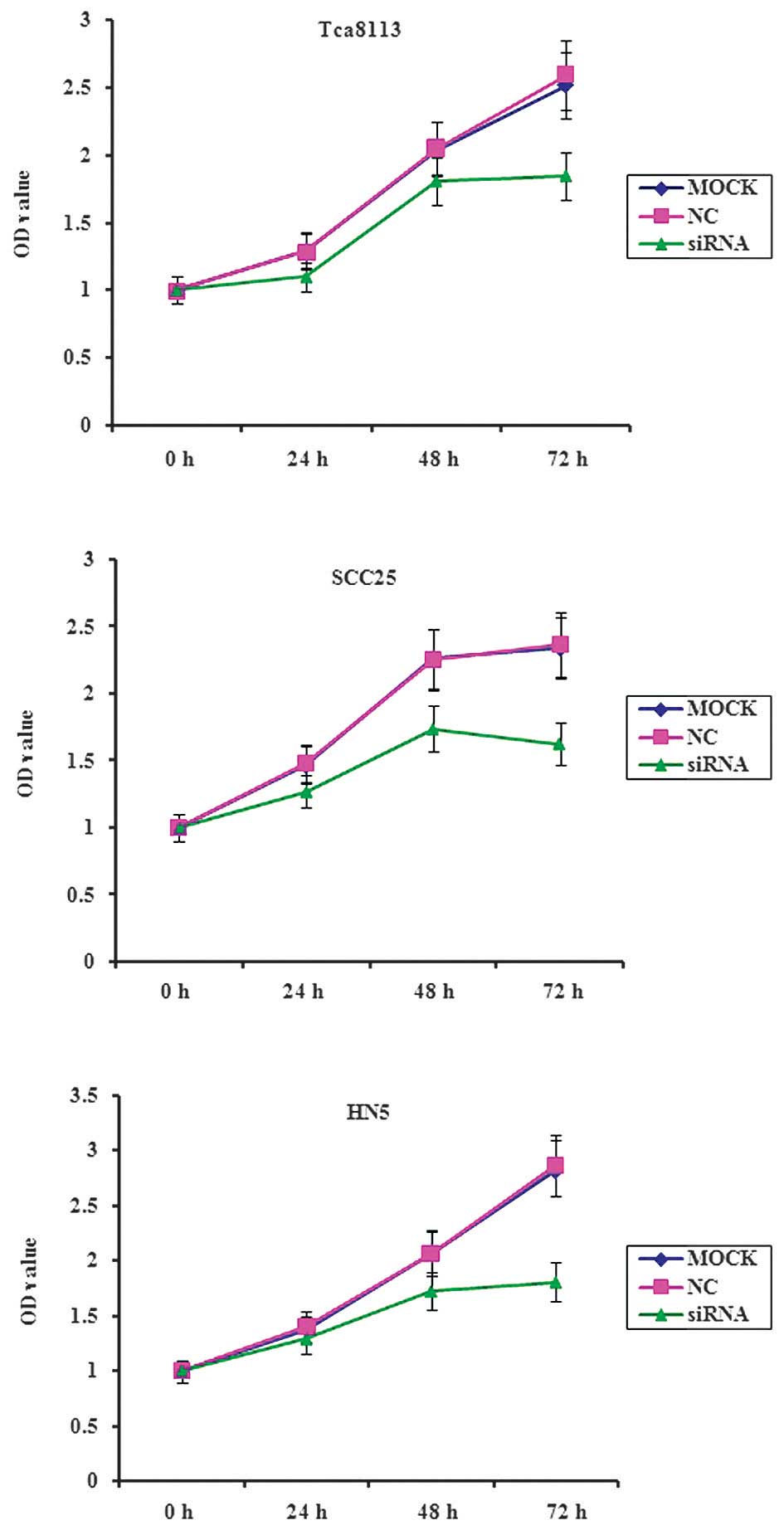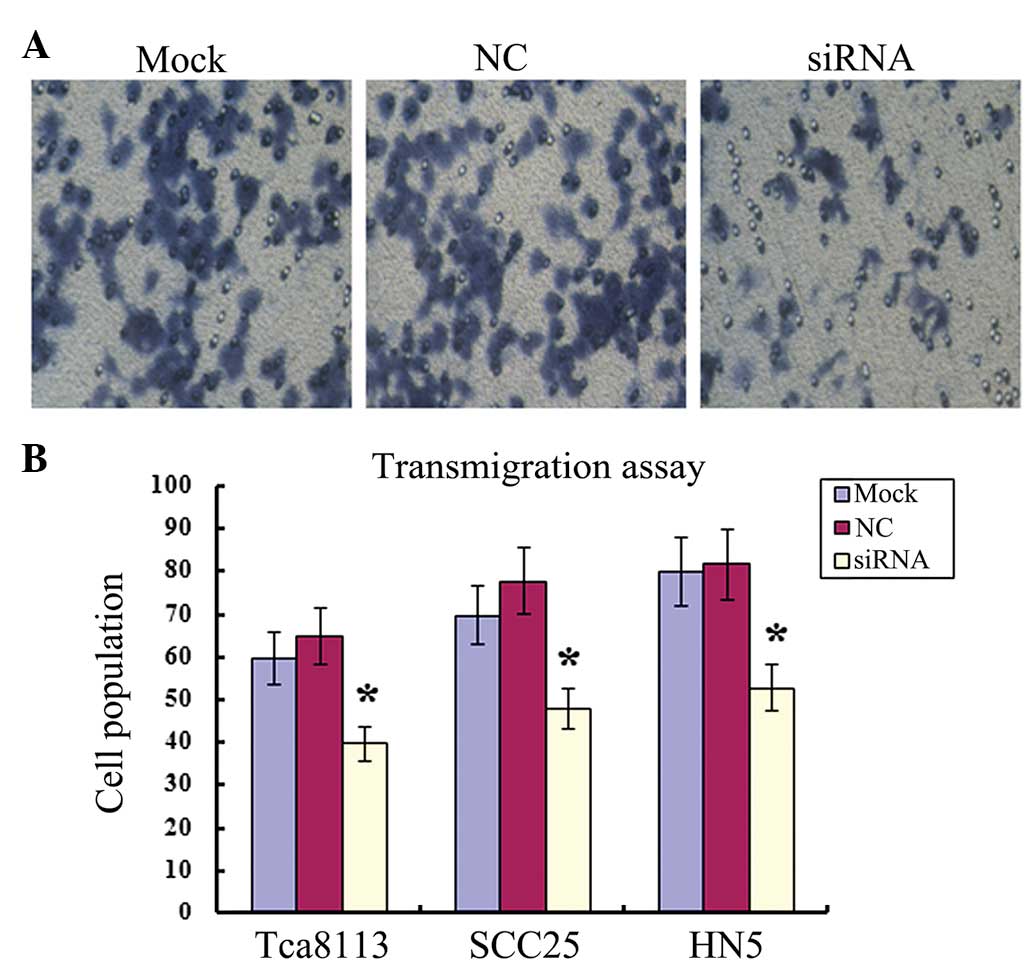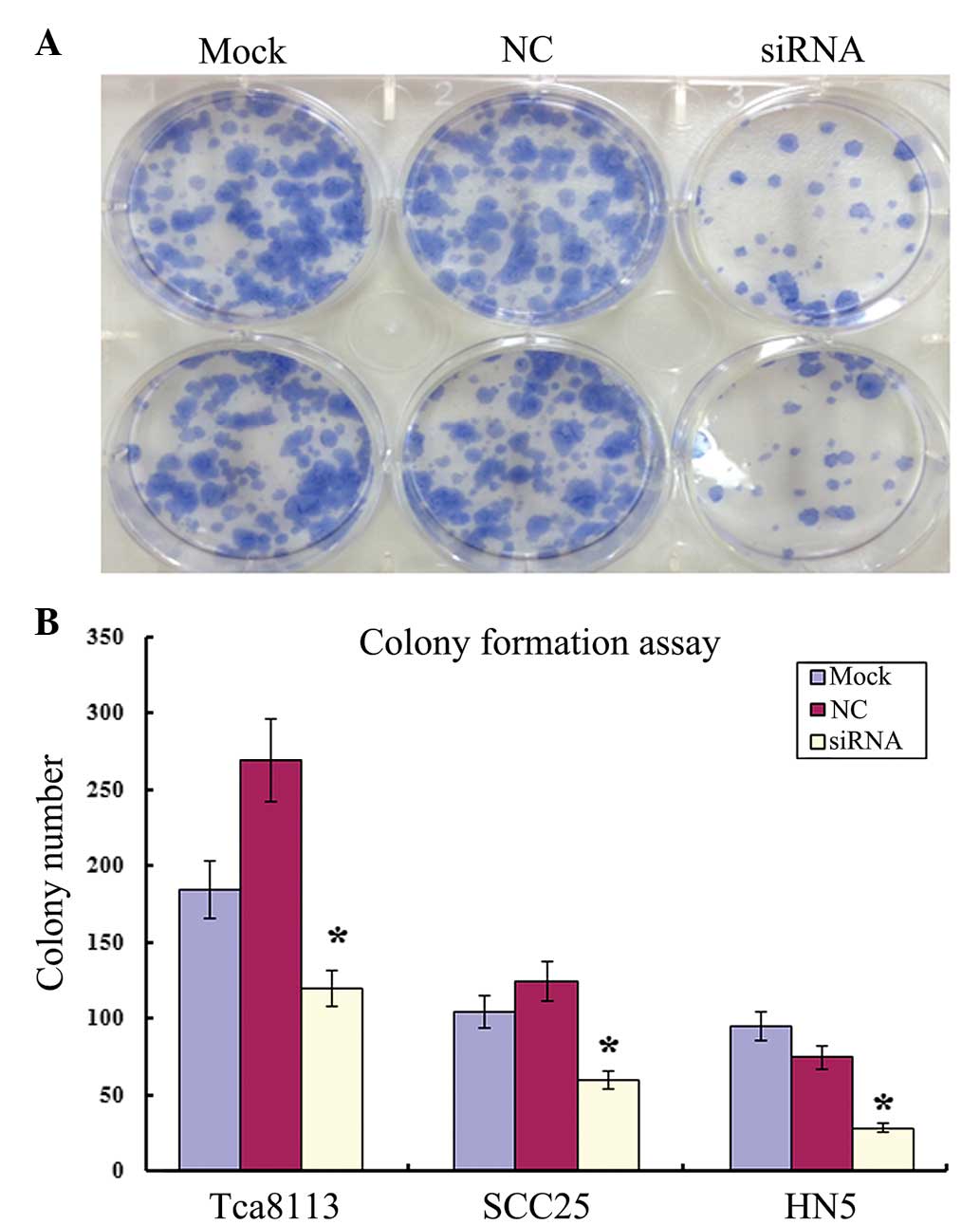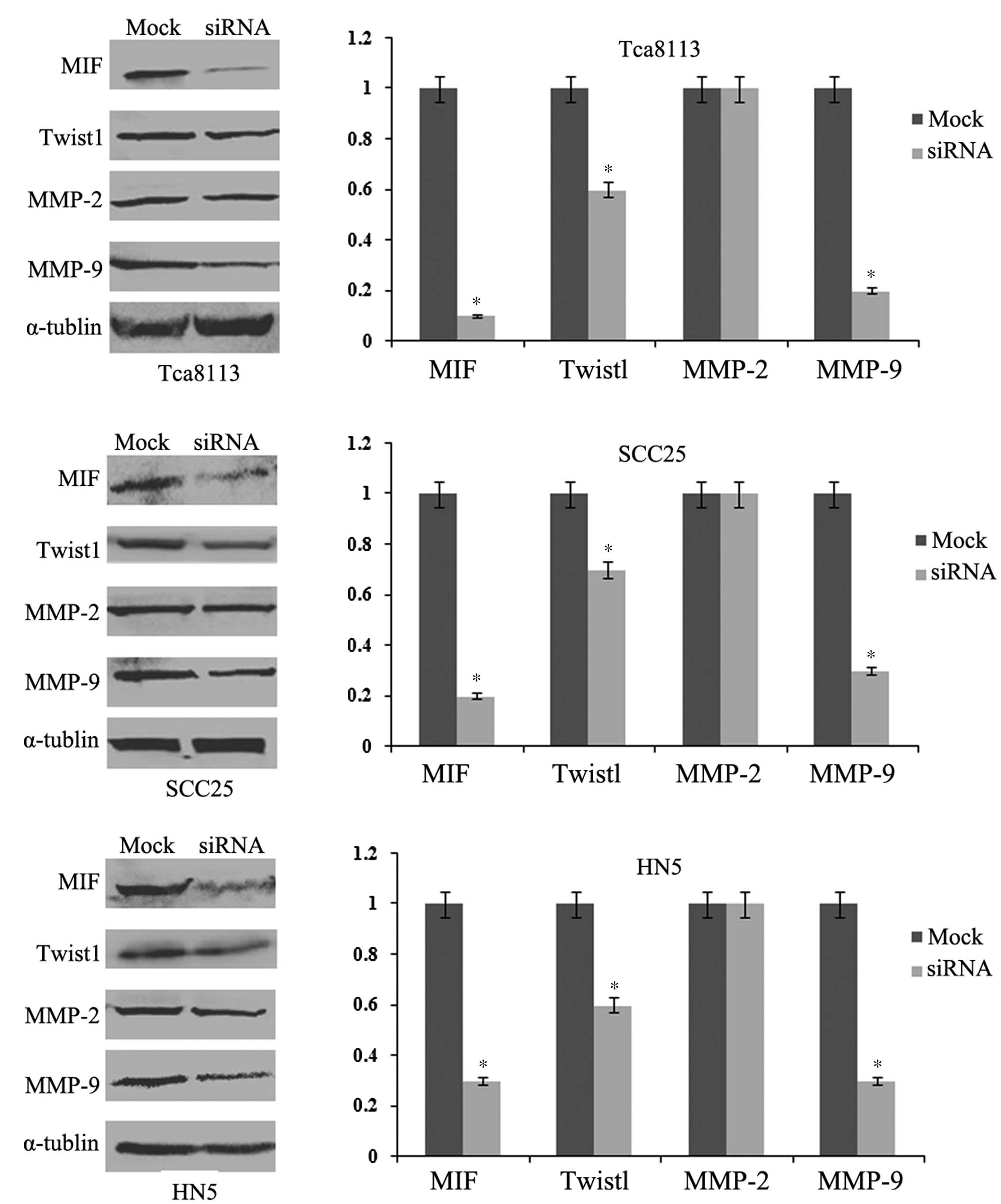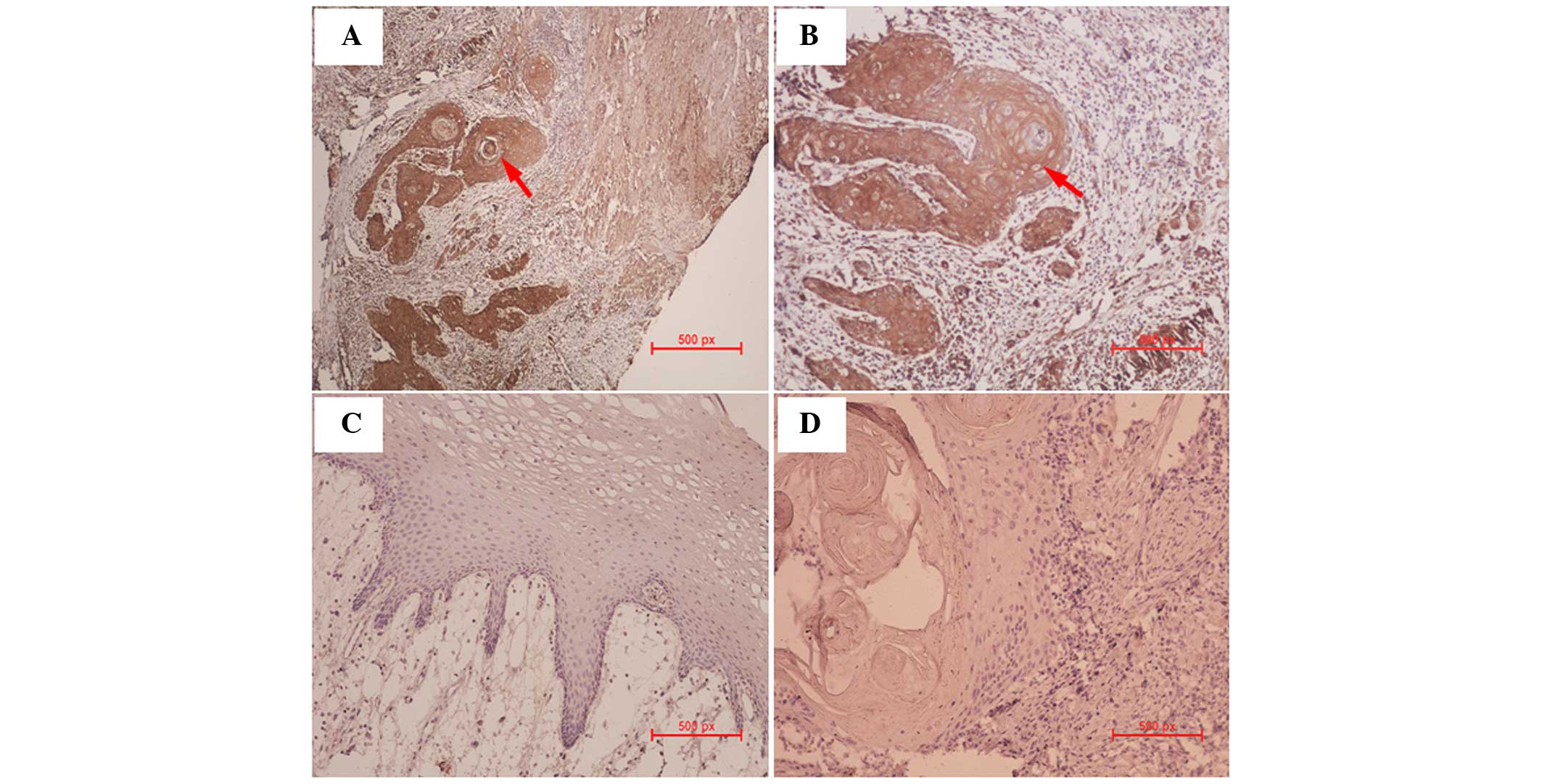Transient transfection of macrophage migration inhibitory factor small interfering RNA disrupts the biological behavior of oral squamous carcinoma cells
Corrigendum in: /10.3892/mmr.2016.5266
- Authors:
- Published online on: November 6, 2015 https://doi.org/10.3892/mmr.2015.4525
- Pages: 174-180
-
Copyright: © Zeng et al. This is an open access article distributed under the terms of Creative Commons Attribution License.
Metrics: Total
Views: 0 (Spandidos Publications: | PMC Statistics: )
Total PDF Downloads: 0 (Spandidos Publications: | PMC Statistics: )
Abstract
Macrophage migration inhibitory factor (MIF) is closely associated with tumorigenesis. The present study aimed to investigate the effects of MIF on the proliferation, migration and colony formation of oral squamous cell carcinoma (OSCC), and to quantify the protein expression levels of MIF in OSCC tissue samples. Firstly, small interfering (si)RNA was used to knock down the gene expression of MIF in Tca8113, HN5 and SCC25 OSCC cells. Secondly, proliferation, migration and colony formation of the OSCC cells were determined by MTT, transmigration and colony formation assays, respectively. Western blotting was performed to detect changes in the protein expression levels of the epithelial mesenchymal transition markers, Twist‑related protein 1 (Twist1), matrix metalloproteinase (MMP)‑2 and MMP‑9. Finally, immunohistochemistry was used to examine the protein expression of MIF in OSCC tissue samples. The results demonstrated that siRNA against MIF significantly downregulated the expression levels of MIF in all OSCC cells, and decreased their proliferation and migration ability. Colony formation ability was also inhibited in the OSCC cells following transfection with MIF siRNA. Furthermore, western blotting demonstrated that the protein expression of Twist1 was decreased similarly to those of MIF. The protein expression of MMP‑2 revealed no change, whereas that of MMP‑9 decreased. The protein expression of MIF was detected in OSCC tissue samples with staining predominantly located in the cell membrane and cytoplasm. The present study demonstrated that MIF may be important in the pathogenesis and progression of OSCC, and indicated its potential therapeutic value.



